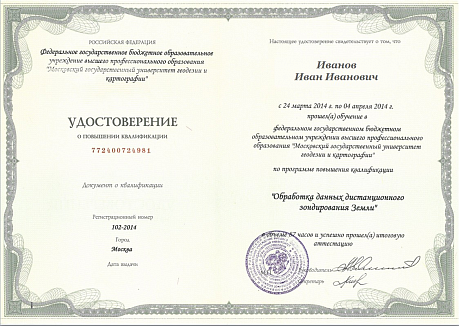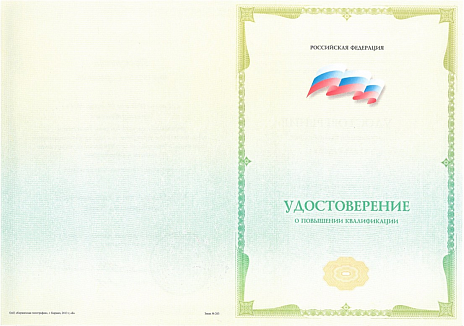The course covers the main aspects of working with remote sensing materials - from data acquisition and their radiometric correction to photogrammetric processing and implementation of thematic classifications.
ScanEx Image Processor Software. In-Depth ERS Data Processing Technology. The Art of Thematic Interpretation
19 - 26 October 2022
19 October 2022 — ScanEx Image Processor Software. In-Depth ERS Data Processing Technology. The Art of Thematic Interpretation
10:00 — 18:00
Day 1 Theoretical part
10:00 — 18:00
Day 1 Practical part
10:00 — 18:00
Day 2 Theoretical part
10:00 — 18:00
Day 2 Practical part
10:00 — 18:00
Day 3 Theoretical part
10:00 — 18:00
Day 3 Practical part
10:00 — 18:00
Day 4 Practical part
10:00 — 18:00
Day 5 Practical part
ScanEx Image Processor Software. In-Depth ERS Data Processing Technology. The Art of Thematic Interpretation
The course covers the issues of in-depth processing and advanced analysis of Earth remote sensing data.
During the training period, students will get acquainted with the basic principles of working with an image, gain skills in working with vector data, learn how to create image mosaics, work with digital elevation models (DTM) and much more. The course uses the ScanEx Image Processor software package.
During the training period, students will get acquainted with the basic principles of working with an image, gain skills in working with vector data, learn how to create image mosaics, work with digital elevation models (DTM) and much more. The course uses the ScanEx Image Processor software package.
10:00 — 18:00
Day 1 Theoretical part
10:00 — 18:00
Day 1 Practical part
10:00 — 18:00
Day 2 Theoretical part
10:00 — 18:00
Day 2 Practical part
10:00 — 18:00
Day 3 Theoretical part
10:00 — 18:00
Day 3 Practical part
10:00 — 18:00
Day 4 Practical part
10:00 — 18:00
Day 5 Practical part


